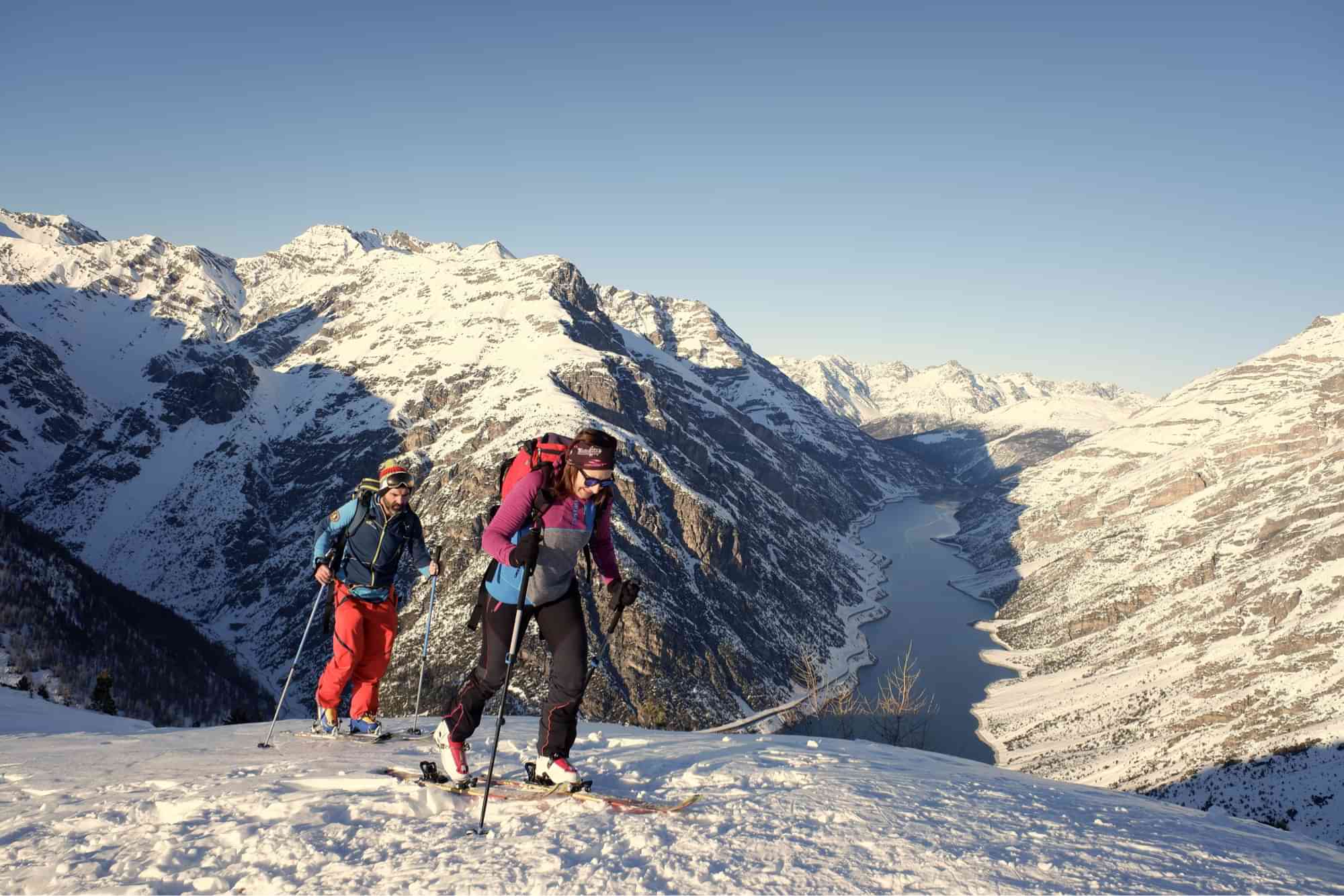
29 Mar Skimo: Ski Mountaineering And Competitive Races
While most people ski downhill, there’s a growing trend for those doing just the opposite — skiing uphill. It’s a sport called ski mountaineering, or “skimo” for short.
Skimo shouldn’t be confused with off-piste cross-country skiing, or even ski touring, which is backcountry skiing that involves both uphill and downhill travel without the need to remove your skis. In contrast, the sport of skimo will sometimes require athletes to take off their skis, strap them to their backpack, and make some tricky mountain ascents on foot — maybe even with the help of crampons or ice axes.
This is because skimo races, after all, can ascend as high as 2,000 meters up to the peak of a mountain.
Governing Foundation of Skimo
The governing foundation for skimo is the International Ski Mountaineering Federation (ISMF). Their goals are to promote, regulate, and develop ski mountaineering worldwide. They also govern ski mountaineering competitions.
ISMF has a set of rules and safety standards for both ski mountaineering races and equipment.
Skimo Gear
A big part of skimo is actually in the type of gear you use. Since athletes will sometimes have to travel by foot, their skis should be lightweight enough not to weigh them down when strapped to their backpack. Thus, their boots must comfortably serve two functions: for attaching to skis and for walking or climbing without skis.
Skimo athletes also use climbing skins with their skis. These are strips of material that attach to the bottom of their skis that help with ascending backcountry slopes. They are later removed once the skier is going downhill. Ski skins are typically made from nylon or mohair and have little hairs that let the ski slide forward in the snow but not backward.
Given the sometimes dangerous and challenging landscapes for ski mountaineering, the ISMF requires athletes to wear helmets in most of their competitions. Sometimes athletes will even need extra mountain climbing gear like ice axes, crampons, ropes, and harnesses.
Types of Skimo Competitions
Team Races
The team race is the classic form of the ski mountaineering sport. The original idea was for people to face scaling a mountain as a team, which increased safety for everyone.
In ISMF team races today, skiers race in teams of two or three athletes of the same sex and age category for ISMF rankings. Athletes must traverse at least three ascents and three descents, although long distance races can certainly include more than that.
A standard ISMF team race will last a maximum of three hours and ascend about 2,000 meters. However, long distance races can last more than one day and cover even greater distances.
Ski mountaineering races will often take competitors to the summit of a mountain. This is why that extra skimo gear comes in handy — ropes and harness and crampons help athletes scale to the mountain’s peak.
Individual Races
Much like the team race, the individual race involves scaling a mountain, but this time athletes do it alone. Again, there are at least three ascents and three descents, as well as sections the athlete must traverse on foot with their skies strapped to their backpack.
Individual races are typically a bit shorter, lasting from one and a half to two and a half hours. Athletes will ascend up to 1,900 meters.
Sprint Races
Unlike the team and individual races, the sprint race is very quick; the fastest athletes complete a sprint course in about three minutes. The total ascent and descent of the course amounts to 100 meters.
Relay Races
Relay races require teams of three or four athletes. Each team member races a single circuit around the course, one after another. Like the sprint race, the relay race is a rather fast event.
Each circuit of any athlete takes about 15 minutes and involves two ascents and two descents, as well as a brief section where the athletes must remove their skis, pack them onto their back, and go by foot. The total height gain is between 150 meters and 180 meters.
The Vertical
Unlike the other races, the vertical race does not involve any descents. This type of race involves only one long ascent, not to exceed 700 meters.


